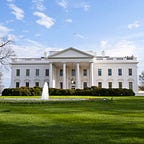How the Real Obama Met the Real Pánfilo
By Terry Szuplat, Senior Director of Speechwriting at the National Security Council
This is something many Cubans never expected to see:
So how’d this happen? For those of us at the White House, it always starts with a question:
How can the President best connect with the people he’s trying to reach?
That’s what President Obama and those of us on his staff ask whenever he travels around the world. Yes, he’ll meet with presidents and prime ministers. But one of the things he values most during his foreign travels is the chance to reach and forge a connection with ordinary people — the people whose support we need for partnerships between our countries.
He holds town halls where he hears directly from students, entrepreneurs, and human rights advocates and answers their questions—something unthinkable in some countries where leaders rarely, if ever, subject themselves to scrutiny by their citizens. He sits down with journalists and social entrepreneurs who are working to improve their communities, from the grassroots up.
As we prepared for the President’s historic trip to Cuba, this question—how to reach the Cuban people — took on added significance. Government-owned television and newspapers would surely have extensive coverage of the President’s meetings with President Castro, his discussion with Cuban entrepreneurs, and his attendance at the big baseball game. And the government had indicated that it would broadcast live President Obama’s speech to the Cuban people, which it did.
Still, the President’s communication team — led by Deputy National Security Advisor Ben Rhodes — was looking for opportunities where the President could reach out to the Cuban people in a less formal, more familiar setting.
Enter Pánfilo.
In Havana, Ambassador Jeff DeLaurentis pitched an idea: President Obama could team up with Pánfilo, an elderly Cuban character played by Luis Silva, one of Cuba’s most popular comedians. His weekly show on state television is approved by the Cuban government, but Pánfilo is still given more license than others to point out the daily struggles of ordinary Cubans and even poke fun at the government. In one running skit, Pánfilo tries to call President Obama on the phone—but he never gets through.
This time, we decided Pánfilo would call and actually get through to the President.
Easier said than done. Luis speaks very little English, and I don’t speak Spanish. So Luis hand-carried his script to the U.S. embassy in Havana, where it was translated into English and emailed to us at the White House. We offered our edits, emailed it back to our team in Havana, who translated it back into Spanish for Luis. A few rounds of that, and a few days later, we had our script.
President Obama taped his portion of the video in the Oval Office two days before he departed for Havana. In it, Pánfilo can’t believe it’s the President — “the real Obama?” he asks. President Obama replies — “the real Pánfilo?”
Watch it here:
The U.S. Embassy and Luis posted the video online the next day, and within hours it was spreading across Cuba. The President hadn’t even landed in Havana and his outreach to the Cuban people had already begun.
It’s been estimated that the video has been viewed more than 2.3 million times online so far, by folks here and in Cuba. Some called it Cuba’s first viral video ever. That’s even more remarkable considering that very few Cubans — by some estimates, only five percent — have access to the Internet. Once it was broadcast on state television, the video reached virtually every Cuban household.
Cubans had never seen anything like it: a president of a country talking and joking with a Cuban, a comedian, the same way the rest of us kid around with our own family and friends. Over and over, those of us who joined President Obama in Cuba were told by Cubans we met that they had seen the President and Pánfilo, too. And they said it with pride.
“It made a big impression on me,” one Havana resident told an American reporter. It showed that President Obama seems to be “open-minded, reasonable and someone capable of putting himself in other’s shoes.”
But that video of their phone call was only the first act. The second came in Havana. In between public events, the President kept his promise and stopped by to see Pánfilo.
In the corner of warehouse in a cervecería in Old Havana, where the President would deliver a public speech moments later, Luis and his team had built a replica of his set. Around a table in his house, Pánfilo and his friends Chequera and Facundo are playing dominoes. When Pánfilo wishes there was a fourth player, in walks President Obama, who says, “I told you I’d see you in Havana.”
Watch it:
This full skit has aired on Cuban television. Most Cubans, perhaps millions, have seen it through the weekly digital paquete — thumb drives that Cubans pass among themselves so they can see the latest entertainment and news. In coming to visit Pánfilo, many Cubans feel as though President Obama came to visit their home, too.
These are the moments — often more than any policy pronouncements — that truly allow the President to create a genuine, often emotional, bond with people around the world. It’s public diplomacy at its best—building the mutual respect and understanding we need with other countries, especially their citizens, to solve global challenges together.
And, as Pánfilo showed, sometimes it’s pretty fun, too.
Terry Szuplat is Special Assistant to the President and Senior Director for Speechwriting at the National Security Council.
